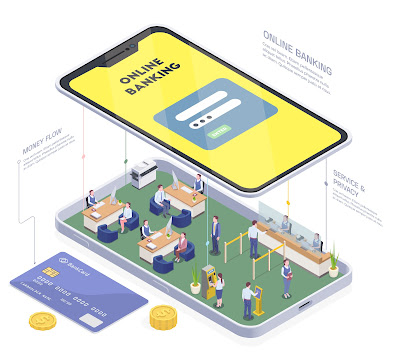In today's digital landscape, businesses constantly seek innovative ways to engage their audience and enhance their brand presence. With the rapid advancement of technology, particularly in artificial intelligence (AI) and image processing, businesses are turning to AI image generator apps like PicsArt to revolutionize their digital content creation processes. This article explores why digital businesses require such AI image-generator apps, delving into their benefits and the transformative impact they can have on mobile app development services.
Introduction
The rise of digitalization has reshaped the way businesses interact with their audience, emphasizing the importance of compelling visual content. From social media platforms to e-commerce websites, the demand for high-quality images is ever-increasing. However, creating visually appealing content can take time and effort. This is where AI image generator apps come into play, offering businesses a powerful tool to streamline their content creation processes and stay ahead in a competitive market.
The Significance of AI Image Generator Apps
- Efficiency in Content Creation: Traditional image editing and manipulation methods often require manual intervention and specialized skills. AI image generator apps leverage machine learning algorithms to automate repetitive tasks, such as background removal, color correction, and object recognition, significantly reducing the time and effort required to create stunning visuals.
- Enhanced Creativity: By harnessing the capabilities of AI, these apps empower users to unleash their creativity without being constrained by technical limitations. From generating artistic effects to transforming photos into vibrant artworks, AI image generator apps offer a myriad of creative possibilities, enabling businesses to captivate their audience with visually compelling content.
- Personalization and Customization: In today's digital age, personalization is key to driving engagement and building brand loyalty. AI image generator apps enable businesses to tailor their visual content to individual preferences, whether it's adding personalized text overlays, applying customized filters, or creating bespoke graphics. This level of personalization fosters deeper connections with the audience and enhances the overall user experience.
- Scalability and Flexibility: Whether it's a startup or a multinational corporation, scalability is essential for businesses to adapt to changing market dynamics. AI image generator apps offer scalability and flexibility, allowing businesses to accommodate fluctuating demands and scale their content creation efforts seamlessly. Moreover, these apps are compatible with various platforms, including mobile devices, making them accessible anytime, anywhere.
The Role in Mobile App Development Services
- Integration with Existing Apps: For businesses offering mobile apps, integrating AI image generator functionality can enhance the overall user experience and differentiate their offering from competitors. Whether it's a photo-sharing app, a social media platform, or an e-commerce marketplace, AI image generator apps can add value by providing users with innovative tools to create and share captivating visuals.
- Monetization Opportunities: AI image generator apps present lucrative monetization opportunities for mobile app developers. By offering premium features such as advanced editing tools, exclusive filters, and royalty-free content libraries, developers can generate revenue through subscription models, in-app purchases, or advertising partnerships. Additionally, integrating AI-driven recommendations and personalized content suggestions can further enhance user engagement and retention.
- Collaboration and Community Building: Beyond individual users, AI image generator apps facilitate collaboration and community building within digital ecosystems. Features such as collaborative editing, content sharing, and user-generated content challenges foster a sense of community among users, driving user engagement and retention. This sense of belonging can be leveraged by businesses to cultivate brand advocates and ambassadors, amplifying their reach and impact.
Choosing the Right AI Image Generator App Development Partner
As businesses recognize the value of AI image generator apps, selecting the right development partner becomes crucial. A reputable machine learning development company with expertise in mobile app development services can provide businesses with tailored solutions that align with their goals and objectives. Key factors to consider when choosing a development partner include:
- Domain Expertise: Look for a development company with a proven track record in AI and image processing technologies. Experience in developing similar apps and a deep understanding of industry trends and best practices are essential for delivering innovative solutions that meet business requirements.
- Technology Stack: Evaluate the technology stack and tools used by the development company to ensure compatibility with your existing infrastructure and future scalability. A forward-thinking approach to technology adoption, coupled with a focus on security and data privacy, is essential for long-term success.
- Collaborative Approach: Choose a development partner that values collaboration and communication, fostering a transparent and iterative development process. Regular updates, feedback loops, and milestone reviews ensure that the final product meets expectations and delivers tangible business outcomes.
- Support and Maintenance: Post-launch support and maintenance are critical for ensuring the continued performance and reliability of the AI image generator app. Choose a development partner that offers comprehensive support services, including bug fixes, feature enhancements, and platform updates, to address evolving business needs and user feedback.
Conclusion
In conclusion, AI image generator apps like PicsArt play a pivotal role in empowering digital businesses to create compelling visual content that resonates with their audience. By leveraging the latest advancements in AI and image processing technologies, these apps offer efficiency, creativity, and scalability, driving innovation and differentiation in today's competitive landscape. Partnering with a reputable machine learning development company for mobile app development services is essential for harnessing the full potential of AI image generator apps and staying ahead of the curve in an ever-evolving digital ecosystem.
Read More About This Post: How Much Does it Cost to Build an AI Image Generator App Like Picsart?









